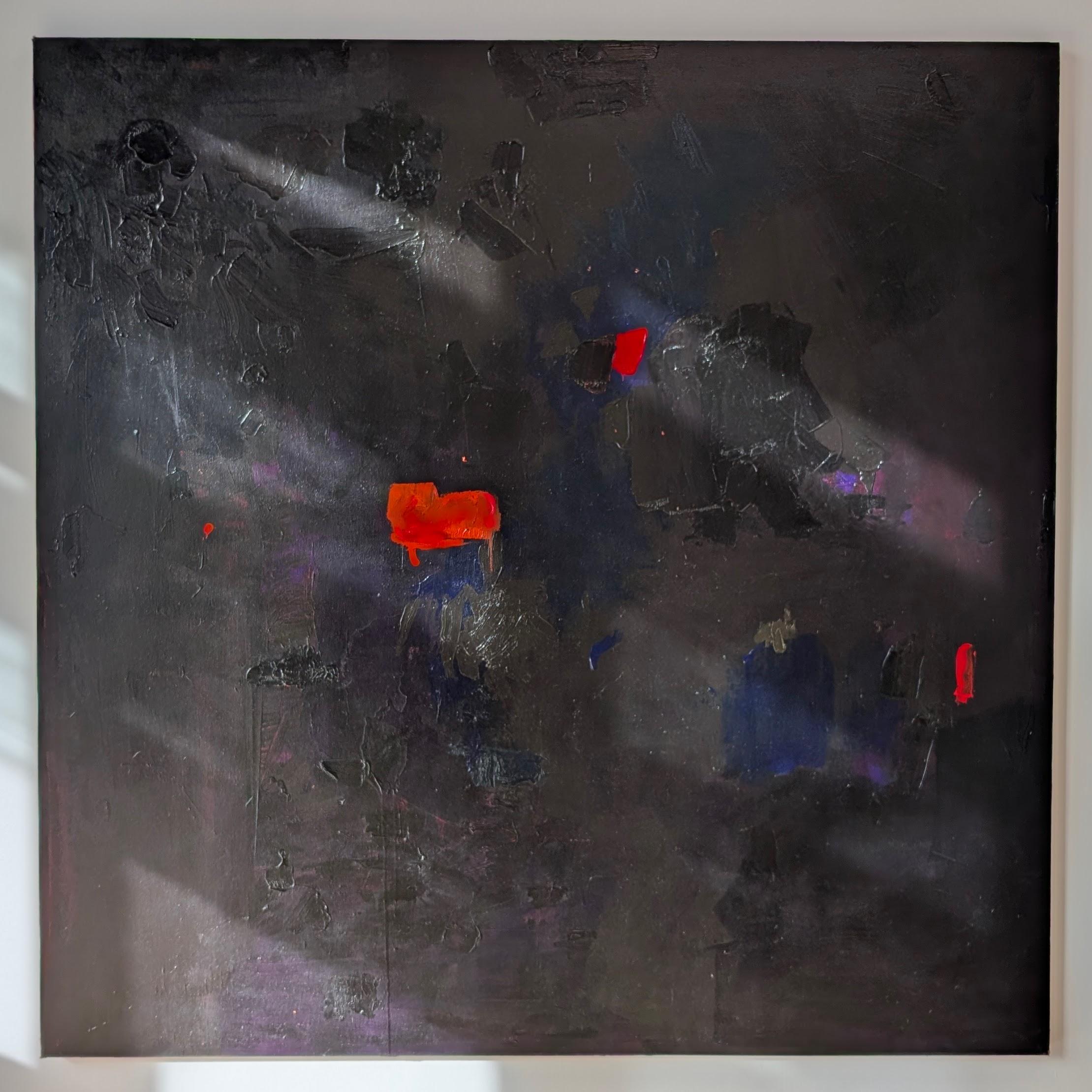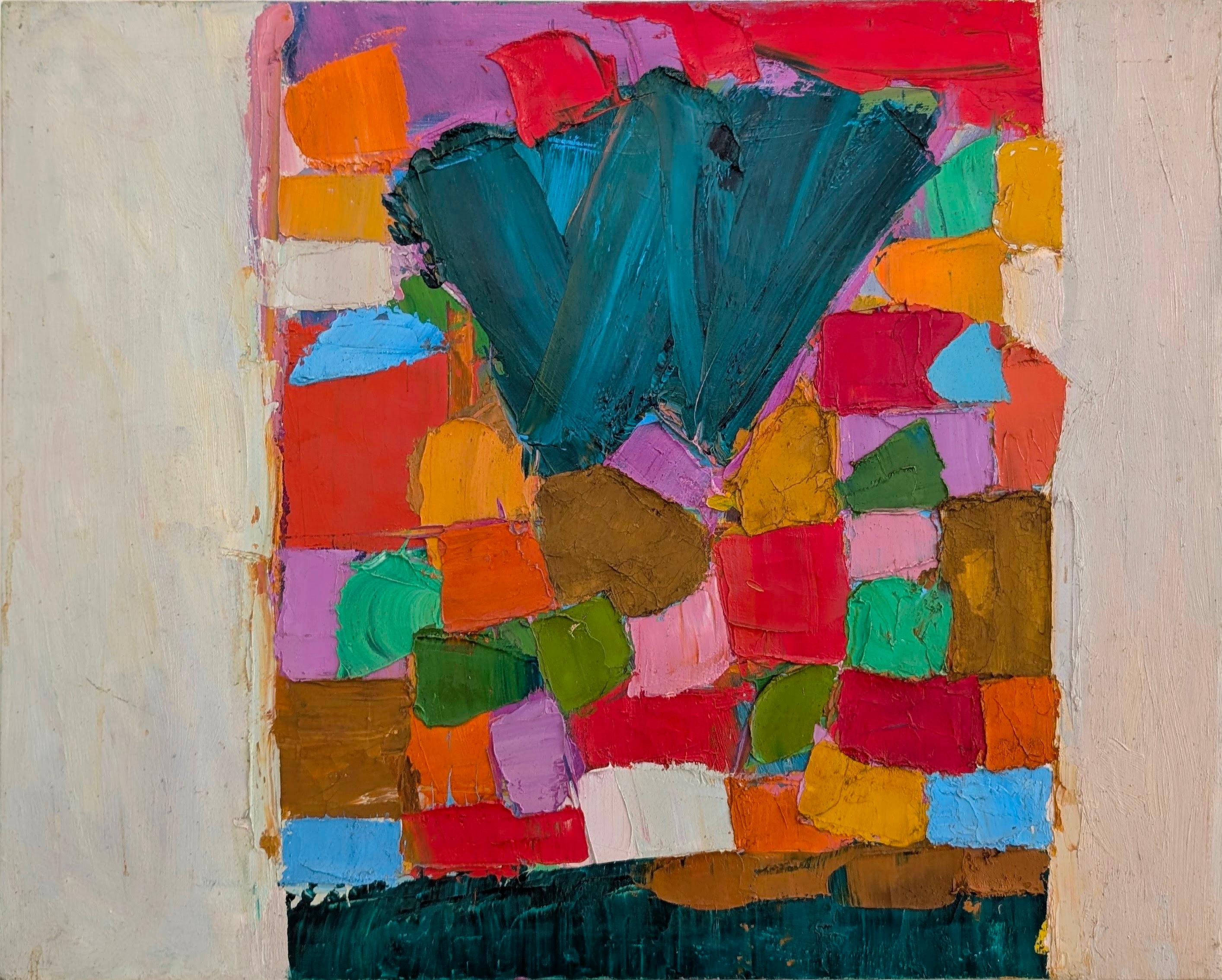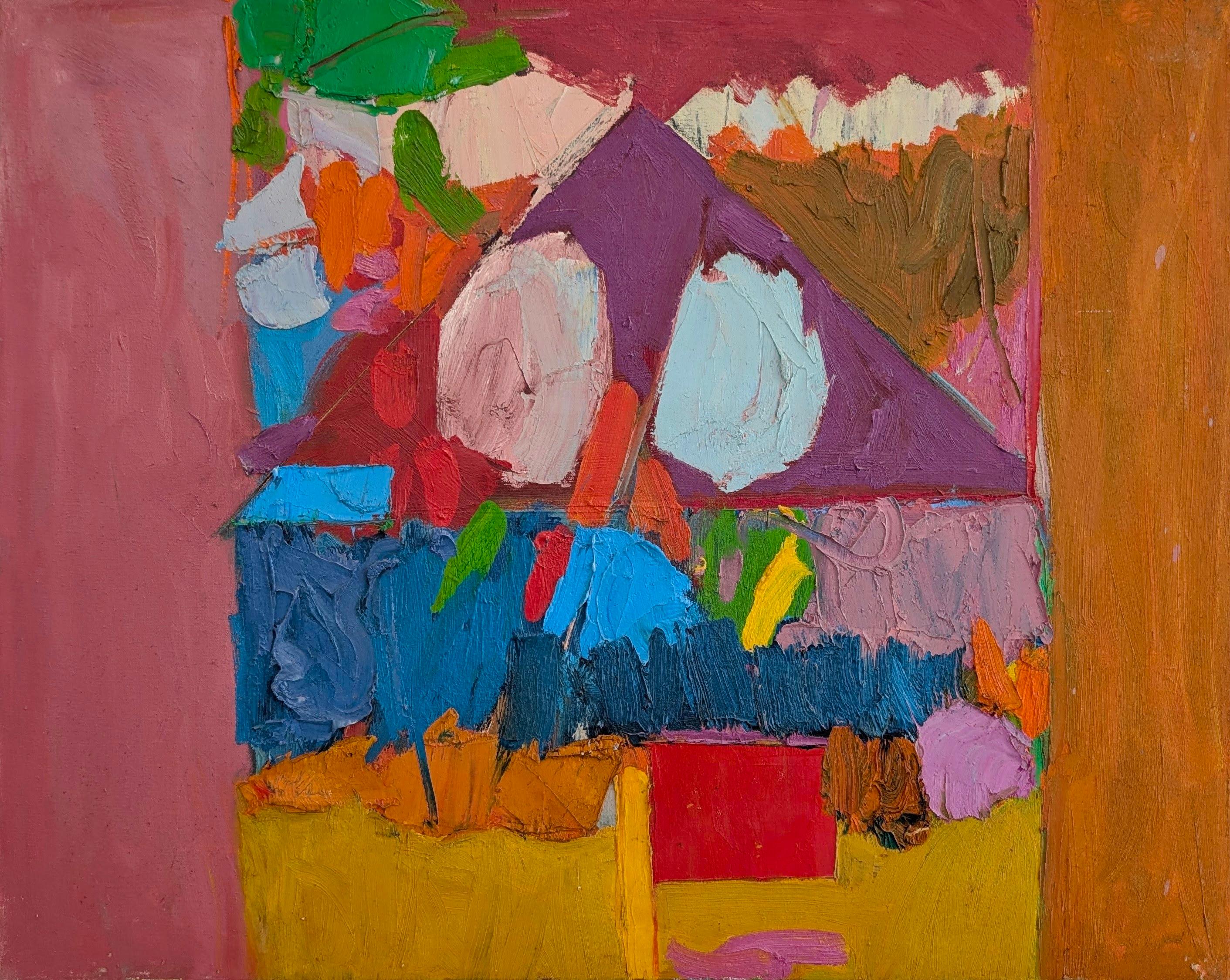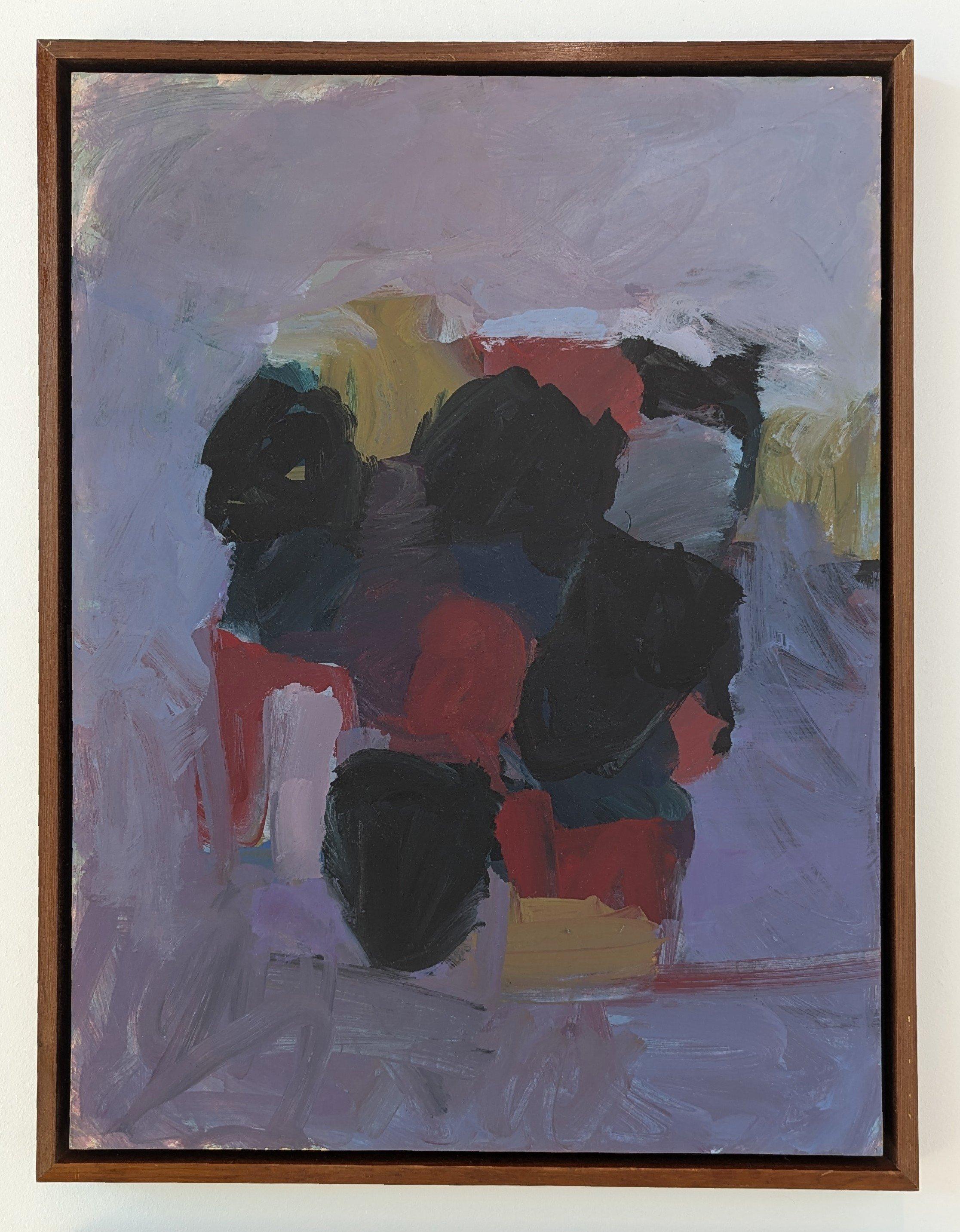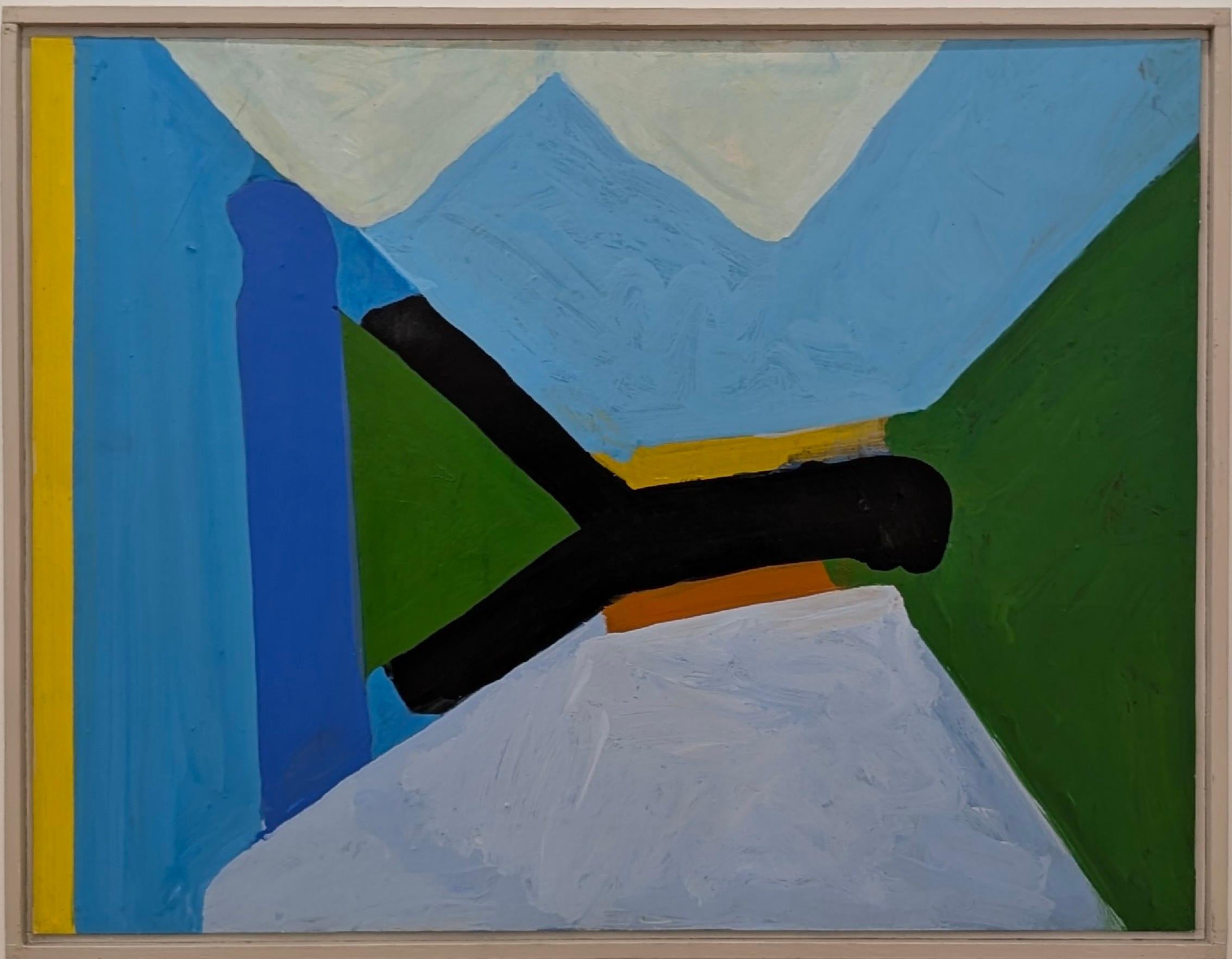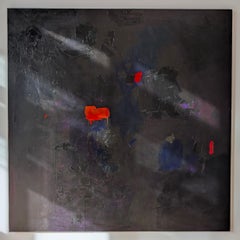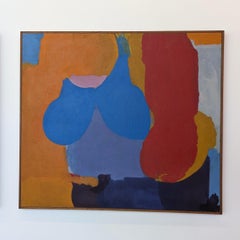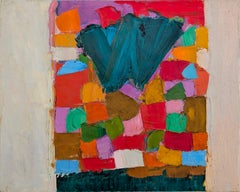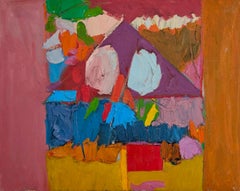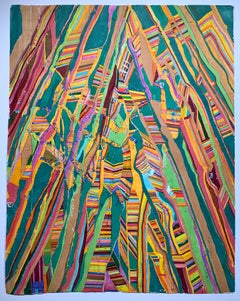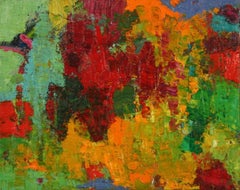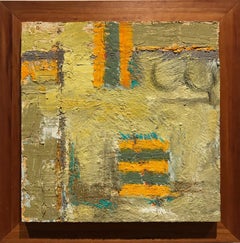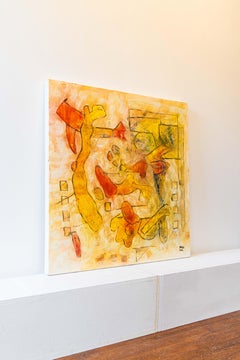Want more images or videos?
Request additional images or videos from the seller
1 of 6
Ron StonierPatches1980s
1980s
$13,500
£10,510.65
€11,953.64
CA$19,419.35
A$21,335.61
CHF 11,150.12
MX$254,444.81
NOK 141,190.70
SEK 131,531.04
DKK 89,323.24
About the Item
Ron Stonier (1933-2001) was a dedicated Vancouver artist celebrated for his exploration of abstract painting, influenced by his mentors Gordon Smith and Jack Shadbolt, as well as by artists like Frank Auerbach and Joan Mitchell. His artistic journey evolved through distinct phases, showcasing a unique blend of colour and technique. Stonier began experimenting with paint patches in the 1960s, later adopting a precise style in his Couple and Target series during the '70s. His later works incorporated a more painterly approach, reflecting his mastery of colour theory. Stonier's art is featured in prominent collections, including the Vancouver Art Gallery and the UBC Fine Art Gallery. His legacy was highlighted by a retrospective at the West Vancouver Art Museum in 2019, celebrating his enduring impact on abstract art.
Ron Stonier was a dedicated Vancouver artist whose life was an unwavering exploration of abstract painting, his works echoing the confidence and expressive power of artists like Frank Auerbach and Joan Mitchell. His artistic evolution saw him move through distinct phases, developing a unique visual language that combined colour, technique, and diverse influences. In the early 1960s, Stonier experimented with patches of paint and coalescing forms contained within broader fields and frames. By the end of that decade, his work had shifted toward a more precise style, exemplified by the horizontal bands of his Couple series and the concentric rings of his Target series in the 1970s. Later in his career, Stonier returned to a more painterly approach in large-scale works, revisiting and reimagining earlier techniques with a newfound freedom. These later pieces, laden with pigment and refinement, are a masterful display of Stonier's confident grasp of colour theory. This constant evolution was a hallmark of Stonier's practice. He was, in essence, a "painter's painter," deeply respected by his peers for his technical skill, relentless pursuit of his artistic vision, and willingness to embrace new directions. His artistic journey was deeply intertwined with his role as an influential teacher. At the Vancouver School of Art (now Emily Carr University) and the Burnaby Art Centre (now Shadbolt Centre for the Arts), Stonier inspired countless students with his exacting standards, passion for art, and thoughtful mentorship. He encouraged them to delve into their creative depths, fostering not only their technical skills but also their artistic voices. Stonier's paintings were exhibited widely throughout his career, gracing the walls of the Vancouver Art Gallery, the UBC Fine Art Gallery (now Morris and Helen Belkin Gallery), and the Burnaby Art Gallery. His legacy was celebrated in a 2019 retrospective at the West Vancouver Art Museum and the 2019/2020 "Painted Paper" exhibition at the McGill Library, curated by the Burnaby Art Gallery. Inspired by his mentors, including Gordon Smith and Jack Shadbolt, as well as by Japanese architecture and Modernism, Stonier's artistic philosophy was encapsulated in his own words: "To live in the present is to include the future with the past. To live in the future is to lose the present and end up in the past." This sentiment speaks to his deep engagement with the artistic traditions that preceded him while maintaining a firm focus on the present moment and the possibilities it held. Stonier painted and drew daily until his passing in 2001, leaving behind a remarkable body of work that stands as a testament to a life lived in pursuit of artistic truth and the enduring power of abstraction.
About the Seller
5.0
Vetted Professional Seller
Every seller passes strict standards for authenticity and reliability
Established in 2008
1stDibs seller since 2024
6 sales on 1stDibs
Typical response time: 4 hours
- ShippingRetrieving quote...Shipping from: Vancouver, Canada
- Return Policy
More From This Seller
View AllUntitled
Located in Vancouver, CA
Ron Stonier (1933-2001) was a dedicated Vancouver artist celebrated for his exploration of abstract painting, influenced by his mentors Gordon Smith and Jack Shadbolt, as well as by ...
Category
1670s Abstract Abstract Paintings
Materials
Canvas, Acrylic
$17,500
Untitled
Located in Vancouver, CA
Ron Stonier (1933-2001) was a dedicated Vancouver artist celebrated for his exploration of abstract painting, influenced by his mentors Gordon Smith and Jack Shadbolt, as well as by ...
Category
1960s Abstract Abstract Paintings
Materials
Canvas, Oil
Untitled
Located in Vancouver, CA
Ron Stonier (1933-2001) was a dedicated Vancouver artist who was celebrated for his exploration of abstract painting. He was influenced by his mentors Gordon Smith and Jack Shadbolt ...
Category
1960s Abstract Abstract Paintings
Materials
Canvas, Oil
Untitled
Located in Vancouver, CA
Ron Stonier (1933-2001) was a dedicated Vancouver artist celebrated for his exploration of abstract painting, influenced by his mentors Gordon Smith and Jack Shadbolt, as well as by ...
Category
1960s Abstract Abstract Paintings
Materials
Canvas, Oil
Untitled
Located in Vancouver, CA
Ron Stonier (1933-2001) was a dedicated Vancouver artist celebrated for his exploration of abstract painting, influenced by his mentors Gordon Smith and Jack Shadbolt, as well as by ...
Category
1960s Abstract Abstract Paintings
Materials
Paper, Oil, Board
Untitled
Located in Vancouver, CA
Ron Stonier (1933-2001) was a dedicated Vancouver artist celebrated for his exploration of abstract painting, influenced by his mentors Gordon Smith and Jack Shadbolt, as well as by ...
Category
1960s Abstract Abstract Paintings
Materials
Acrylic, Board, Archival Paper
You May Also Like
Untitled
By Roland Ayers
Located in Wilton Manors, FL
Roland Ayers (1932-2017). Untitled, 1983. Ink on paper, measures 17 x 23 inches. Unframed and unmounted. Signed and dated lower left. Ayers holds the distinction of having participated in the first important survey of African-Americans, Contemporary Black Artists in America, a 1971 show at The Whitney.
Biography:
Artist and art educator, Roland Ayers was born on July 2, 1932, the only child of Alice and Lorenzo Ayers, and grew up in the Germantown district of Philadelphia. Ayers served in the US Army (stationed in Germany) before studying at the Philadelphia College of Art (currently University of the Arts). He graduated with a BFA in Art Education, 1954. He traveled Europe 1966-67, spending time in Amsterdam and Greece in particular. During this period, he drifted away from painting to focus on linear figurative drawings of a surreal nature. His return home inaugurated the artist’s most prolific and inspired period (1968-1975). Shorty before his second major trip abroad in 1971-72 to West Africa, Ayers began to focus on African themes, and African American figures populated his work almost exclusively.
In spite of Ayers’ travel and exploration of the world, he gravitated back to his beloved Germantown, a place he endowed with mythological qualities in his work and literature. His auto-biographical writing focuses on the importance of place during his childhood. Ayers’ journals meticulously document the ethnic and cultural make-up of Germantown, and tell a compelling story of class marginalization that brought together poor families despite racial differences. The distinctive look and design of Germantown inform Ayers’ visual vocabulary. It is a setting with distinctive Gothic Revival architecture and haunting natural beauty. These characteristics are translated and recur in the artist’s imagery.
During his childhood, one of the only books in the Ayers household was an illustrated Bible. The images within had a profound effect on the themes and subjects that would appear in his adult work. Figures in an Ayers’ drawing often seem trapped in a narrative of loss and redemption. Powerful women loom large in the drawings: they suggest the female role models his journals record in early life. The drawings can sometimes convey a strong sense of conflict, and at other times, harmony. Nature and architecture seem to have an antagonistic relationship that is, ironically, symbiotic.
A critical turning point in the artist’s career came in 1971 when he was included in the extremely controversial Whitney Museum show, Contemporary Black Artists in America. The exhibition gave Ayers an international audience and served as a calling card for introductions he would soon make in Europe.
Ayers is a particularly compelling figure in a period when black artists struggled with the idea of authenticity. A questioned often asked was “Is your work too black, or not black enough?” Abstractionists were considered by some peers to be sell-outs, frauds or worse. Figurative* work was accused of being either sentimental or politically radical depending on the critical source. Ayers made the choice early on to be a figurative artist, but considered his work devoid of political content.
Organizations such as Chicago’ s Afri-Cobra in the late 1960‘s asserted that the only true black art of any relevance must depict the black man and woman...
Category
1980s Abstract Abstract Paintings
Materials
Paper, Ink
$960 Sale Price
20% Off
Released
By John Barkley
Located in Montreal, Quebec
"I am an experimental painter. I have been working on my craft since 1996. I start work with a conceptual point of entry and then work intuitively, in dialogue with the work. The art...
Category
2010s Abstract Paintings
Materials
Canvas, Oil
UNTITLED
By Sherry Giryotas
Located in Three Oaks, MI
Sherry Giryotas' abstract paintings in this series are reminiscent of Paul Klee’s paintings with orange hues and geometrical shapes which almost take o...
Category
2010s Abstract Abstract Paintings
Materials
Oil, Panel
Forms and Colors
Located in Washington, DC
Forms and Colors is a lyrical study of organic shapes floating in a milky atmosphere. Red and yellow forms fill the foreground while black outlined boxes line up behind. It's a kinet...
Category
Early 2000s Abstract Abstract Paintings
Materials
Canvas, Mixed Media, Oil
UNTITLED
By Sherry Giryotas
Located in Three Oaks, MI
Sherry Giryotas' abstract paintings in this series are reminiscent of Paul Klee’s paintings with orange hues and geometrical shapes which almost take o...
Category
2010s Abstract Abstract Paintings
Materials
Oil, Panel
Trending
By Bonnie Maygarden
Located in New Orleans, LA
New work by Bonnie Maygarden
ARTIST STATEMENT
I create paintings without the aid of technology, yet I am interested in making works that are informed by and react to a culture defi...
Category
21st Century and Contemporary Abstract Abstract Paintings
Materials
Acrylic
